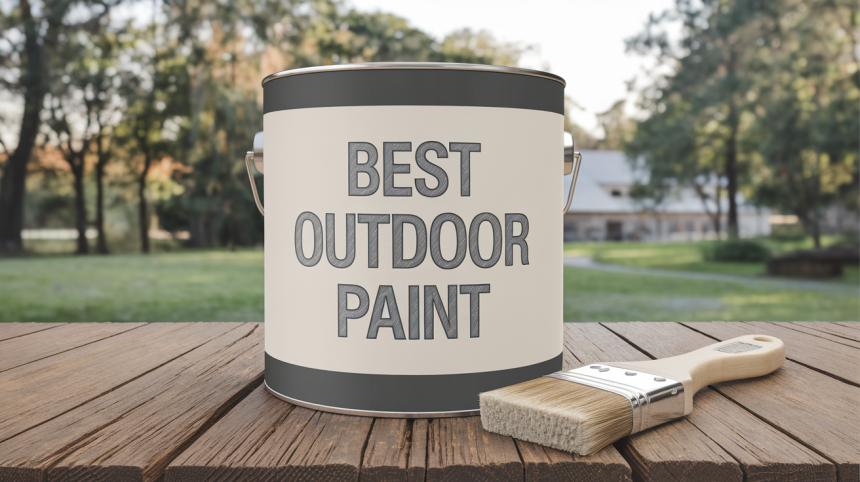Finding the right outdoor paint can be tough.
Many homeowners spend time and money on paints that chip, fade, or peel after just one season in the sun or rain. The wrong choice can make your home look worn out fast.
Good outdoor paint does more than just add color to your house. It works as a shield against harsh weather, stops damage from sun and water, and keeps your home looking fresh for years.
The right paint can make old surfaces look brand new and add value to your property.
In this guide, we’ll cover the best types of outdoor paints for different surfaces. You’ll learn what makes quality paint last longer.
We’ll explain how to pick colors that look good on your home and share tips to make your painting project go smoothly.
How to Choose the Best Paint for Outdoor?
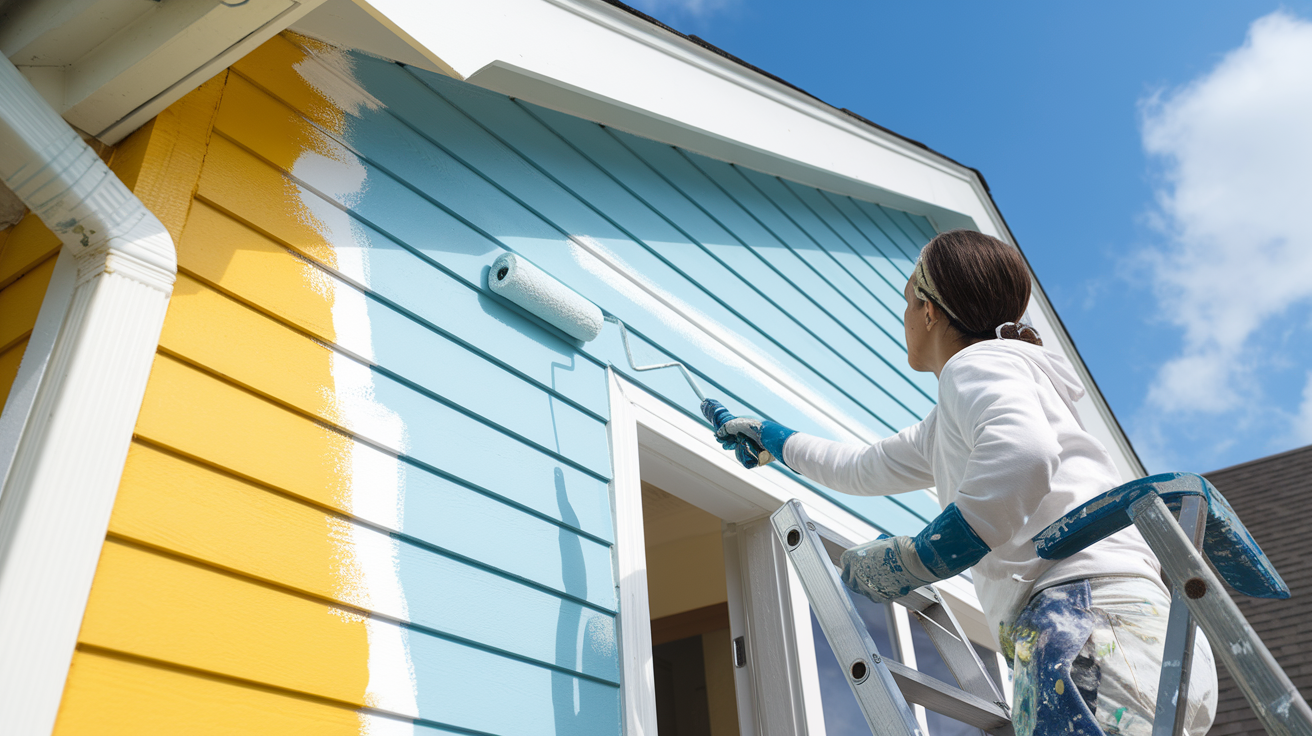
When picking paint for outdoor surfaces, start by assessing the material you’re painting. Wood, metal, brick, and concrete all need different types of paint.
For example, wood often requires paint that protects against moisture, while metal needs rust-resistant paint.
Next, think about your local weather. If you live in a rainy area, choose paint that resists water damage. For sunny places, pick paint that won’t fade easily in the sun.
Durability is also key. Look for paint that lasts a long time and doesn’t need frequent touch-ups. This saves you time and money in the long run.
Finally, consider the finish. Matte finishes hide imperfections but are harder to clean. Satin is easy to clean and works well on walls.
Semi-gloss and gloss finishes are shiny and great for doors or trim as they stand up to wear and tear.
By keeping these tips in mind, you’ll find the perfect paint for your outdoor project!
Types of Paints for Outdoor
The table below provides an overview of different types of paints suitable for outdoor surfaces, including their unique characteristics, best uses, and pros and cons.
Each paint type, from latex to chalk paint, offers specific benefits for various outdoor projects, allowing homeowners to choose the best option based on durability, drying time, and desired finish.

| Type of Paint | Best For | Description | Pros | Cons |
|---|---|---|---|---|
| Latex Paint | Outdoor walls and surfaces | A water-based paint that dries quickly and resists cracking. | Eco-friendly, quick drying, easy cleanup | Less durable in harsh conditions |
| Oil-Based Paint | Doors, trim, harsh weather areas | Known for its durability and resistance to wear, but has a strong odor. | Long-lasting, durable, resists wear | Takes longer to dry, strong smell |
| Acrylic Paint | Wood, metal, concrete surfaces | A versatile, fast-drying paint that works well on multiple surfaces. | Fast drying, flexible, easy cleanup | Lower gloss finish than oil-based paints |
| Enamel Paint | Metal surfaces, railings | A tough, glossy finish ideal for high-traffic areas and metal surfaces. | Durable, scratch-resistant, long-lasting | Takes longer to dry; careful application |
| Chalk Paint | Outdoor furniture | Perfect for a vintage or distressed look with minimal prep work. | Easy to apply, unique distressed look | Requires sealing; less durable outdoors |
Types of Paint Finishes for Outdoor Surfaces
-
Matte Finish – Hides imperfections well but requires more cleaning. Ideal for a natural, non-shiny look.
-
Satin Finish – Slightly glossy and durable, great for trim and siding. Resists wear and easy to clean.
-
Gloss Finish – High-shine and tough, best for doors and metal. Shows flaws but offers strong protection.
-
Eggshell Finish – Soft sheen, more durable than matte. Perfect for fences and shutters.
Now that we’ve covered the types of outdoor paints and paint finishes, it’s important to look at the different shades you can choose for your exterior projects.
The right color can enhance the curb appeal of your home and improve its overall look.
Let’s take a closer look at how selecting the perfect shade can make a significant impact on your outdoor spaces.
Choosing the Best Outdoor Paint Colors
Choosing the right paint for your outdoor spaces is essential to enhance their beauty and ensure durability against the elements.
From neutral tones to bold accents, the right color can create a welcoming atmosphere that complements your surroundings and style.
Neutral Shades for Outdoor
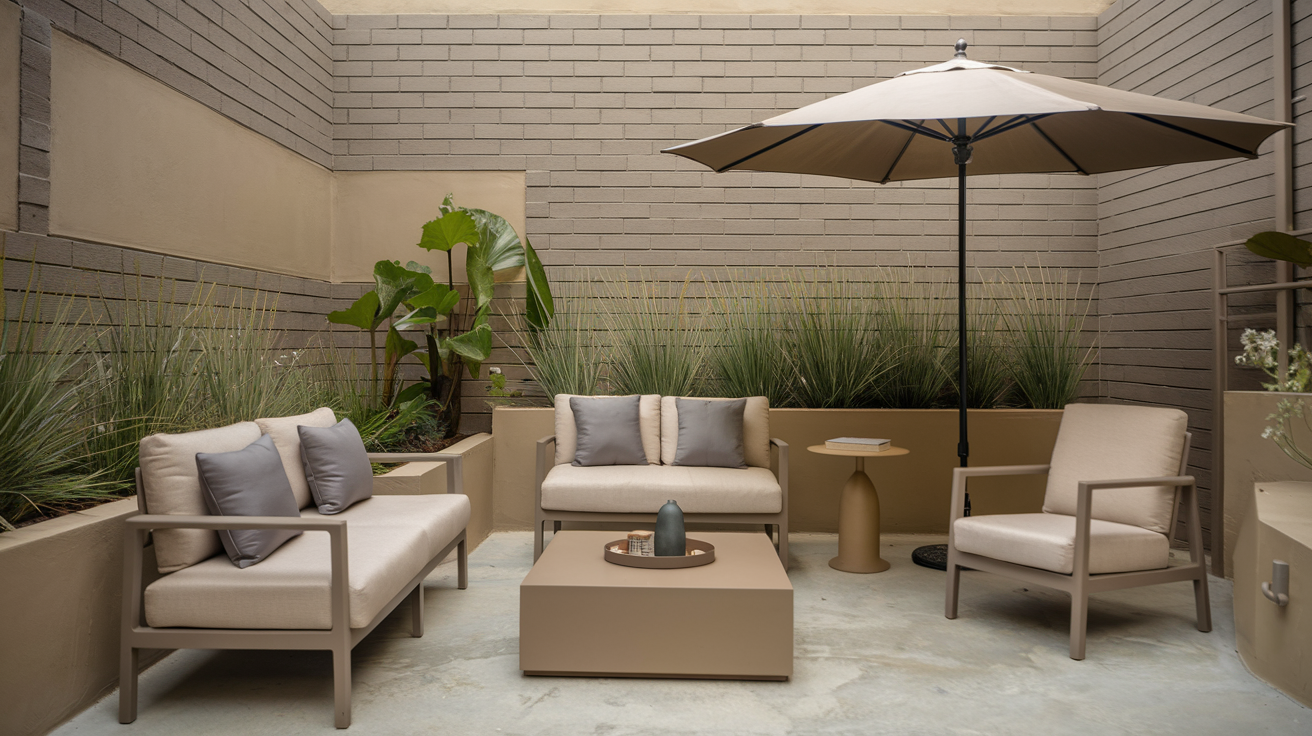
Choosing the right paint for outdoor spaces is important because it needs to withstand the weather while looking great.
Neutral shades like beige, grey, or taupe are perfect for creating a classic, versatile look that complements any style. These colors also hide dirt and wear better than brighter shades, making them practical for outdoor use.
When picking outdoor paint, go for durable, weather-resistant formulas. Look for paints labeled “exterior grade” that can handle rain, sun, and temperature changes. Satin or semi-gloss finishes work well because they’re easy to clean and resist moisture.
Recommended Neutral Paint Colors:
Sherwin-Williams:
-
Agreeable Gray (SW 7029) – A warm gray that works with almost any outdoor decor.
-
Accessible Beige (SW 7036) – A soft beige with a hint of grey for a modern yet cozy feel.
Benjamin Moore:
-
Revere Pewter (HC-172) – A timeless grey with warm undertones that looks great in natural light.
-
Edgecomb Gray (HC-173) – A light taupe that adds warmth without being too bold.
These neutral shades will give your outdoor space a fresh, inviting look that lasts through the seasons!
Bold Shades for Outdoor Accent Walls
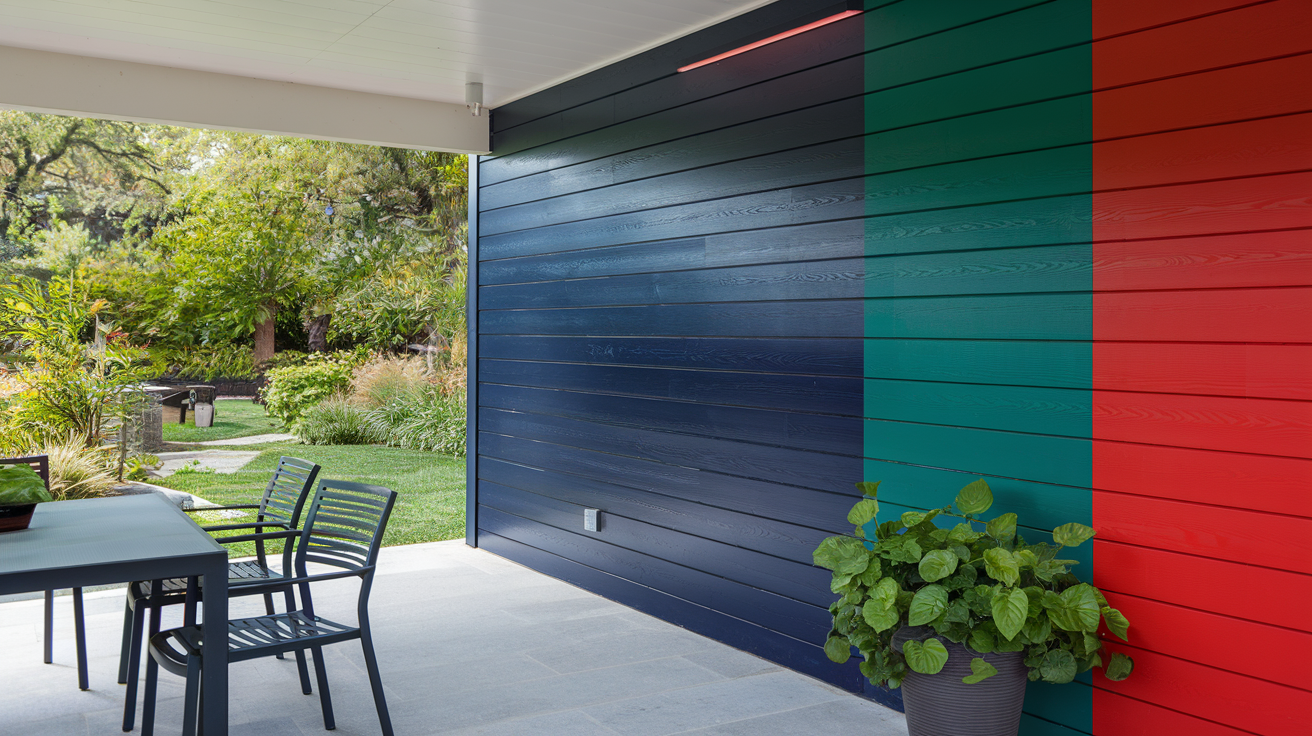
Bold colors can bring life and personality to your outdoor space, making it feel vibrant and unique. These eye-catching shades are perfect for accent walls, creating a focal point that stands out and adds character to your yard or patio.
However, picking the right bold color and finish is important to keep the space balanced and inviting.
Deep navy blue adds a touch of grace and calm, while forest green brings a natural, earthy vibe. Bright reds can create warmth and excitement, making them great for areas where you want to entertain or relax. Pair bold colors with neutral tones on surrounding surfaces to avoid overwhelming the space.
For outdoor walls, satin or gloss finishes work best. They’re durable, easy to clean, and help the colors pop, even in sunlight.
Recommended Bold Paint Colors:
Sherwin-Williams:
-
Naval (SW 6244) – A deep navy that’s timeless and classy
-
Evergreen Fog (SW 9130) – A soft green with a modern feel
Benjamin Moore:
-
Hale Navy (HC-154) – A warm navy that’s perfect for outdoor accents
-
Caliente (AF-290) – A lively red that adds energy to any space
With these bold colors, your outdoor area will feel lively, stylish, and full of charm!
Earth Tones for Outdoor Spaces
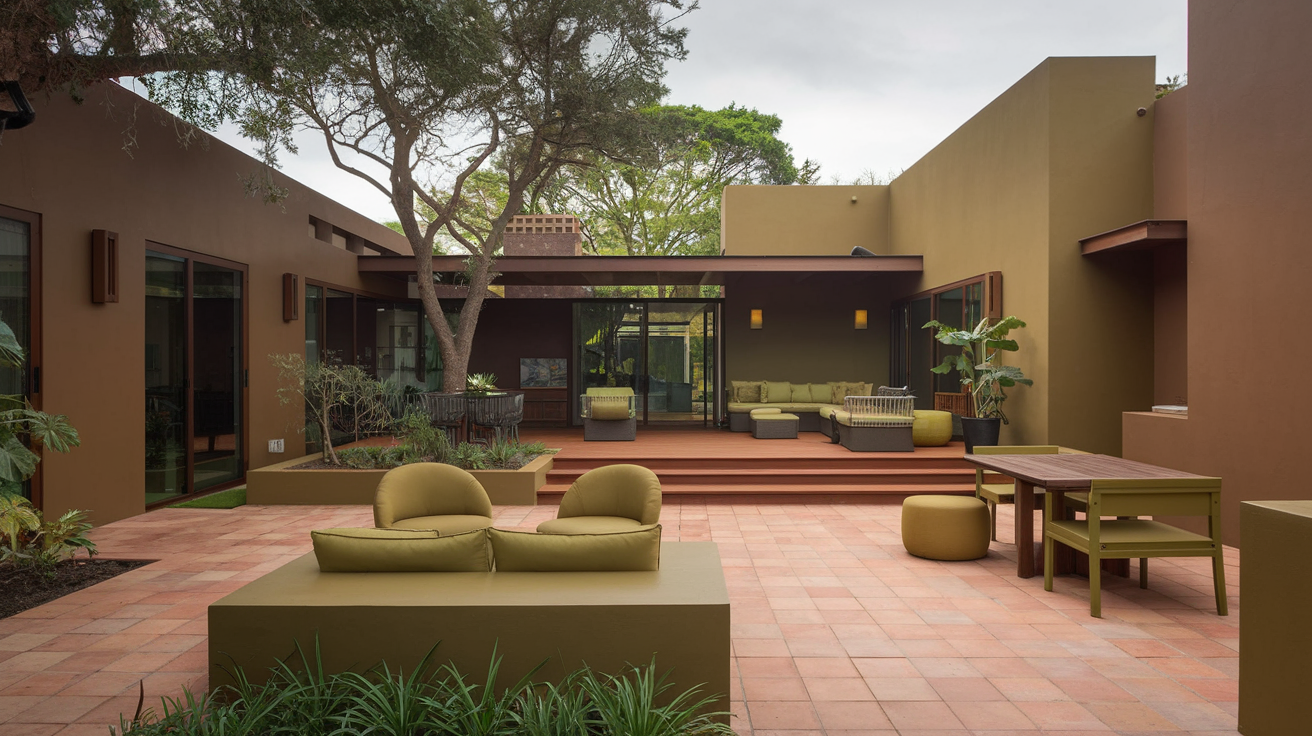
Earth tones like brown, terracotta, and olive green bring the beauty of nature into your outdoor spaces. These colors blend perfectly with the environment, creating a calming and harmonious feel.
Earthy shades work well for patios, decks, and garden walls, making them feel related to the surrounding landscape.
When choosing earth tones, consider the natural light and surroundings. For example, olive green complements gardens and wooded areas, while terracotta adds warmth to sunny spots. Browns work well in shaded areas, creating a cozy, grounded atmosphere.
For outdoor use, pick durable, weather-resistant paints in satin or matte finishes. These finishes help hide imperfections and withstand the elements, ensuring your space stays beautiful for years.
Recommended Earth Tone Paint Colors:
Sherwin-Williams:
-
Urbane Bronze (SW 7048) – A rich, warm brown with grey undertones
-
Rookwood Terracotta (SW 2802) – A vibrant, earthy red-orange
Benjamin Moore:
-
Olive Grove (2146-20) – A soft, natural green with grey undertones
-
Tuscan Terracotta (1208) – A warm, sunbaked orange-brown
These colors will help you create an outdoor space that feels natural and inviting to the world around you.
Light Shades for Outdoor Walls
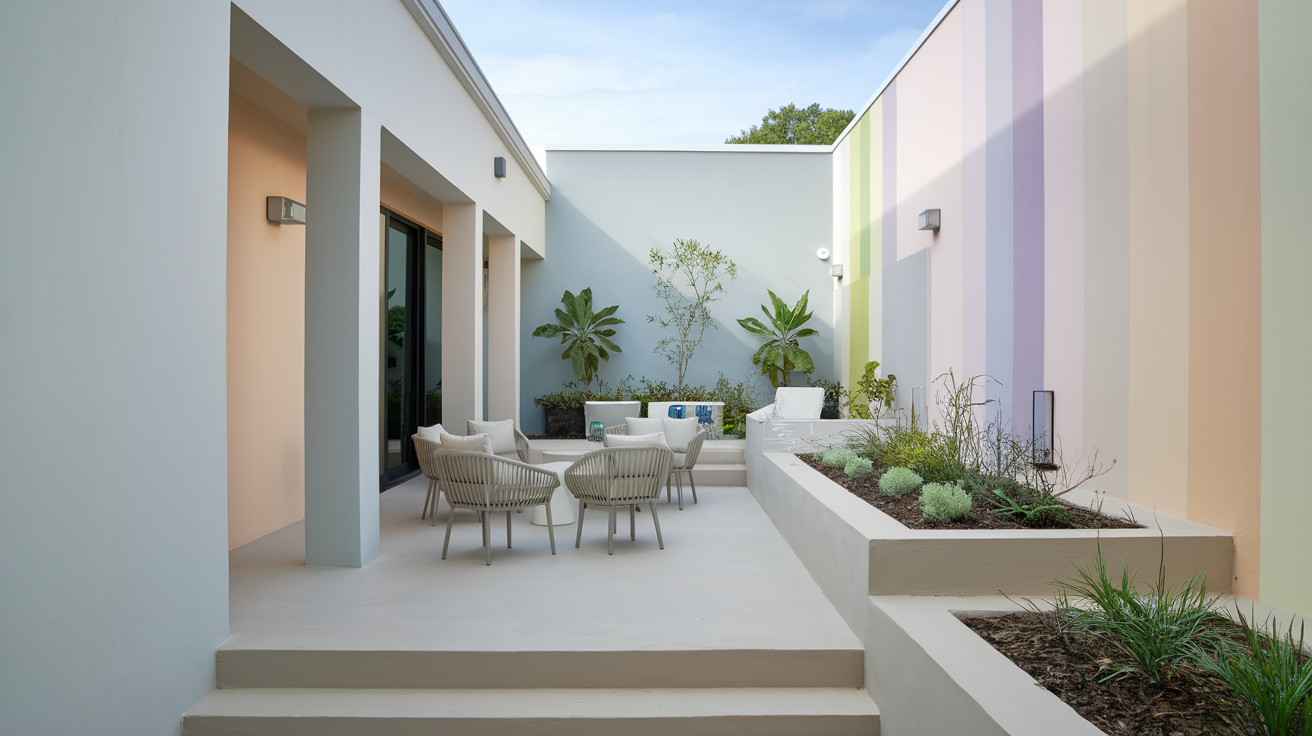
Light shades are perfect for outdoor walls because they reflect sunlight, keeping surfaces cooler and making spaces feel more open and welcoming.
These colors work well in various outdoor areas, from patios to garden walls, creating a fresh and inviting atmosphere.
When choosing light shades, consider options with soft undertones like pale grey, beige, or pastel hues. These colors add warmth without being too bold, blending beautifully with natural surroundings.
For durability, pick exterior-grade paints that resist weathering, fading, and mildew, ensuring your walls stay vibrant for years.
Recommended Light Paint Colors:
Sherwin-Williams:
-
Incredible White (SW 7028) – A soft, warm white with a hint of grey, perfect for a clean yet cosy look.
-
Sea Salt (SW 6204): A light greenish-grey that complements outdoor greenery.
Benjamin Moore:
-
Pale Oak (OC-20) – A versatile light beige with warm undertones, ideal for blending with natural elements.
-
Simply White (OC-117) – A bright, crisp white that stays soft and inviting in the sunlight.
Behr:
- Polar Bear (PPU18-01) – A cool white that reflects light beautifully, great for modern outdoor spaces.
-
Wheat Bread (PPU6-09) – A warm, light tan that adds a touch of earthiness.
These light shades will enhance your outdoor areas, making them feel bright, spacious, and harmonious with nature.
Paints for Different Surfaces Outdoors
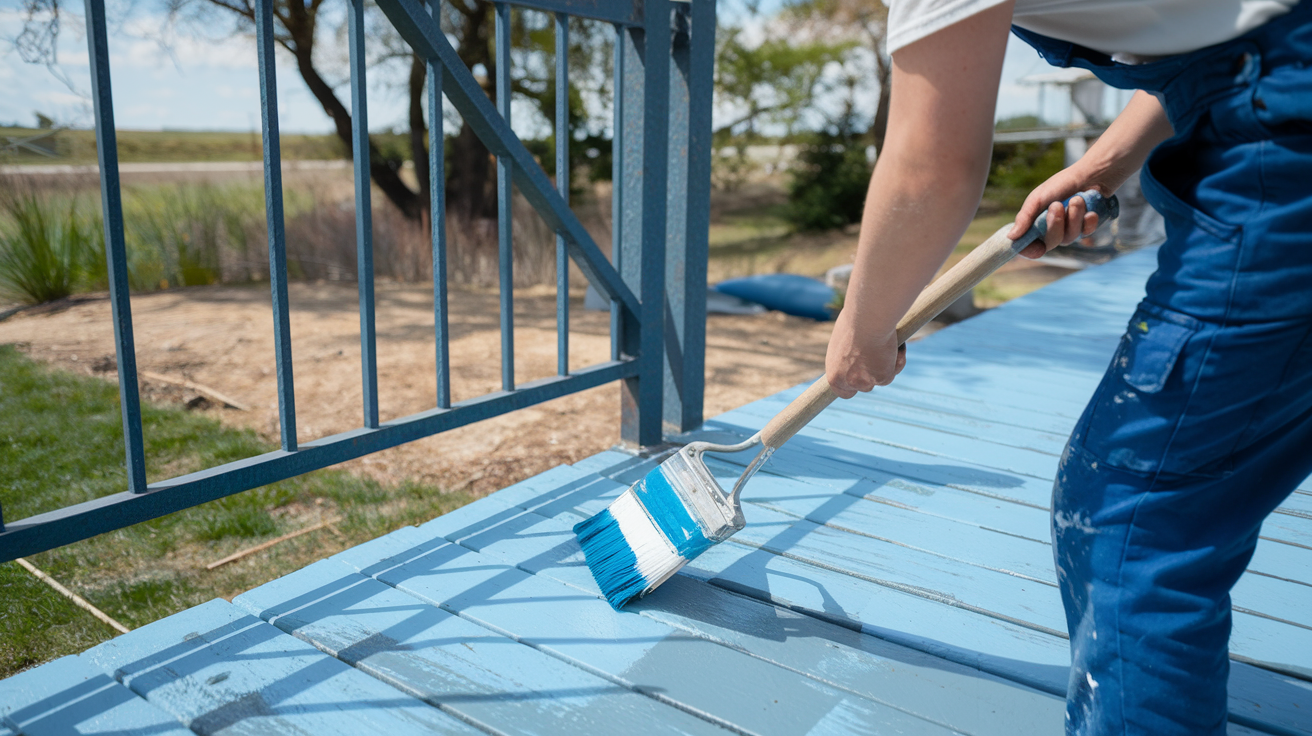
Choosing the right paint for outdoor surfaces is essential to ensure durability and long-lasting protection against the elements.
Different materials, such as wood, metal, concrete, and plastic, require specific types of paint to adhere properly and provide the best results.
Below are the best paint options for various outdoor surfaces.
| Surface Type | Paint Type | Preparation Tips |
|---|---|---|
| Wood | Acrylic latex paint | Apply a primer first for better adhesion and longevity. |
| Metal | Oil-based or enamel paints | Clean the metal, apply a rust-inhibiting primer to prevent rust. |
| Concrete and Brick | Acrylic latex masonry paint | Use on rough surfaces; ensures breathability and resists fading. |
| Plastic and PVC | Spray paint for plastic or multi-surface | Clean and dry the plastic before painting for better adhesion. |
Special Considerations for Paints for Outdoor
When choosing paint for outdoor surfaces, there are a few key things to keep in mind to make sure your project lasts and looks great.
UV Protection: Sunlight can make the paint fade over time. Paints with UV protection help keep the color bright and fresh, even after months in the sun.
Water Resistance: Rain and humidity can damage surfaces. Water-resistant paint acts like a shield, keeping moisture out and protecting the material underneath.
Mold and Mildew Resistance: In damp or humid areas, mold and mildew can grow on surfaces. Using paint that resists these problems helps keep your outdoor spaces clean and healthy.
Surface Preparation: Before painting, it’s important to prepare the surface. Cleaning, sanding, and priming help the paint stick better and last longer.
By considering these factors, you can choose the right paint for your outdoor project and enjoy the results for years to come!
Common Mistakes to Avoid When Choosing Paint for Outdoor
When picking paint for outdoor projects, it’s easy to make mistakes that can cause problems later. Here are some common ones to avoid:
-
Using the Wrong Paint: Never use interior paint outside. It’s not made to handle rain, sun, or wind, so it will peel and fade quickly. Always choose paint designed for outdoor use.
-
Skipping Primer: Primer helps the paint stick better and last longer. If you skip it, the paint might not hold up well, leading to cracks or peeling sooner than expected.
-
Ignoring the Weather: Don’t paint when it’s too hot, cold, or wet. Extreme temperatures or humidity can mess up how the paint dries, leaving a rough or uneven finish.
-
Forgetting Maintenance: Some paints need more care than others. Picking a low-maintenance option can save you time and effort, keeping your outdoor space looking great for years.
By avoiding these mistakes, your outdoor paint job will look wonderful and last a long time!
Wrapping It Up
Choosing the best outdoor paint depends on your needs and the surfaces you’re painting.
If it’s wood, metal, or concrete, picking the right type of paint ensures it lasts longer and looks great.
Don’t forget to think about your local weather—like rain, sun, or snow—so your paint can handle the conditions.
Before buying, consider your outdoor space and what you want to achieve. A little planning goes a long way!
Based on what is discussed in this guide, it is recommended to test samples to see how the color looks in different lights and on your surface.
Feel free to share your painting projects or ask questions in the comments below.
Happy painting!

